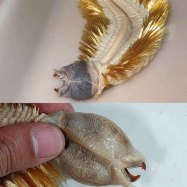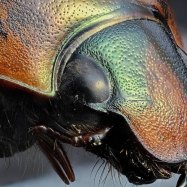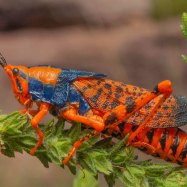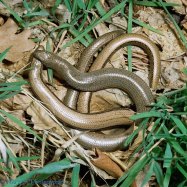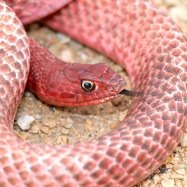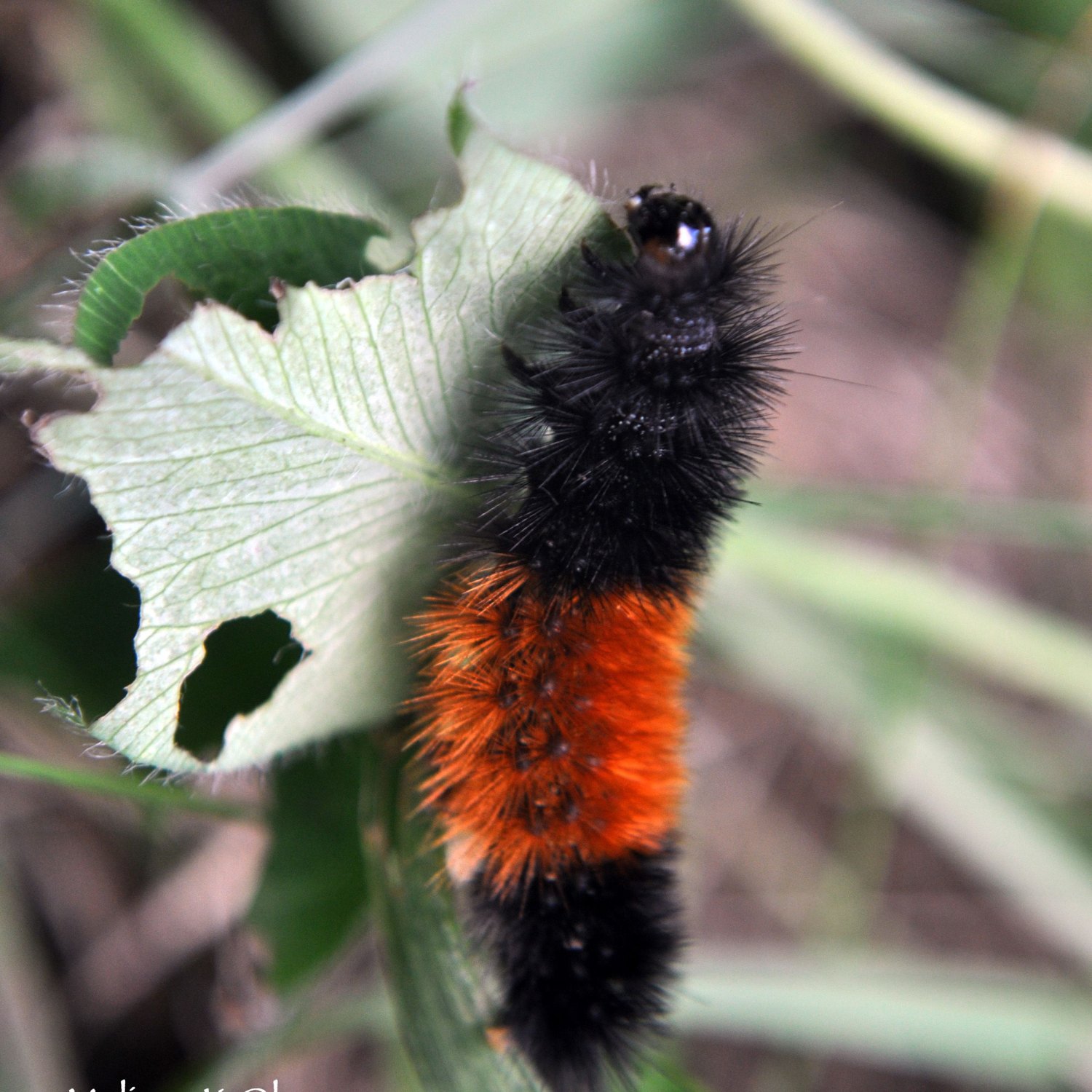
Woolly Bear Caterpillar
1.5 to 2 inches (3.8 to 5 cm)
The Woolly Bear Caterpillar, found in eastern and central North America, is a common sight during the fall season. These cylindrical creatures grow to 1.5-2 inches and belong to the Erebidae family. They are known for their unique black and orange bands, which some say can predict the severity of the coming winter. These fascinating creatures are a must-see for nature lovers! #WoollyBearCaterpillar #NorthAmerica #FallSeason
Animal Details Summary:
Common Name: Woolly Bear Caterpillar
Kingdom: Animalia
Habitat: Grasslands, meadows, gardens, forests
The Fascinating World of the Woolly Bear Caterpillar
Nature is full of amazing creatures, both big and small. From majestic lions to tiny ants, each species has its own unique characteristics and traits that make them stand out. One particular creature that we may often overlook is the woolly bear caterpillar, also known as the Pyrrharctia isabella. These fuzzy little creatures may seem insignificant at first sight, but they have quite a fascinating story to tell Woolly Bear Caterpillar.The Basics: Who, What, Where, and How
The woolly bear caterpillar belongs to the Kingdom Animalia, the phylum Arthropoda, and the class Insecta. It is a member of the order Lepidoptera, which includes butterflies and moths. This family of insects can be found in various habitats such as grasslands, meadows, gardens, and forests, making it a common sight in North America.Woolly bear caterpillars are herbivorous, meaning they feed on plants. They have a unique method of feeding known as chewing, where they use their mandibles to break down and eat plant material. This is an essential process for their growth and development.
The Region and Origin
The woolly bear caterpillar is native to the eastern and central parts of North America, specifically the United States. It can be found in states such as New York, Pennsylvania, and Massachusetts, among others. Its scientific name, Pyrrharctia isabella, is derived from the Greek words "pyrrhos," meaning flame-colored, and "arctos," meaning bear White Shark. The common name, woolly bear caterpillar, comes from its fuzzy appearance, resembling that of a tiny bear.The Appearance
The most notable feature of the woolly bear caterpillar is its distinctive coloration. It has a black and brown banded pattern, with a few white hairs scattered throughout its body. These bands may vary in size and intensity, with some caterpillars having thicker brown bands, while others have thinner ones.In terms of body shape, the woolly bear caterpillar is cylindrical, with a visible head and thorax. It also has six tiny legs and a pair of prolegs, which help it move and cling onto surfaces. This caterpillar may appear small, but it can grow up to 1.5 to 2 inches (3.8 to 5 cm) in length.
The Transformation Process
Like all butterflies and moths, the woolly bear caterpillar undergoes a remarkable transformation process known as metamorphosis. This process has three stages: egg, larva (the caterpillar), and pupa (the cocoon). During the larval stage, the caterpillar feeds and grows, shedding its skin several times to accommodate its increasing size.Once it reaches its full size, the caterpillar will stop feeding and look for a sheltered spot to spin its cocoon. Inside the cocoon, the caterpillar undergoes various physical changes known as pupation, transforming into a moth. The moth will then emerge from the cocoon and go through a final stage of maturation before beginning its life as an adult.
The Facts and Myths
The woolly bear caterpillar has been a subject of many myths and superstitions throughout history. One of the most common myths is that the color of the caterpillar's bands can predict the severity of the upcoming winter. According to this myth, a thicker brown band indicates a milder winter, while a thinner one signifies a harsh one. However, this belief has no scientific evidence to support it and is simply based on folklore.Another popular myth surrounding the woolly bear caterpillar is that it can predict an individual's personality traits based on the number of black bands it has. For example, a caterpillar with more black bands is believed to bring good luck, while one with fewer bands is seen as unlucky. This is purely a superstition and has no scientific basis.
The Role in the Ecosystem
Like all living creatures, the woolly bear caterpillar also plays an essential role in the ecosystem. As herbivores, they help control the growth of plants and contribute to nutrient cycling in the environment. In addition, they serve as a vital source of food for various predators, such as birds, small mammals, and other insects.Moreover, the woolly bear caterpillar is also an indicator species, meaning its presence or absence can indicate the health of an ecosystem. Changes in their population levels can reflect the impact of environmental factors such as climate change, pollution, and habitat destruction. Therefore, it is crucial to protect and conserve these creatures and their habitats.
The Power of Adaptation
One of the most admirable qualities of the woolly bear caterpillar is its ability to adapt to its surroundings. These caterpillars go through different stages of survival, starting as eggs, then larvae, pupae, and finally emerging as a moth. Throughout these stages, they must face various challenges, such as predators, harsh weather conditions, and food scarcity. However, they have adapted to survive and thrive in these conditions, making them a resilient species.Moreover, the woolly bear caterpillar is also capable of surviving extreme temperatures. As the weather turns colder, the caterpillar will produce a natural antifreeze substance in its body, allowing it to live through the winter. This ability makes them a symbol of hope and resilience in the face of adversity.
The Future of the Woolly Bear Caterpillar
While the woolly bear caterpillar may seem like a common and harmless creature, its population is facing some threats. Habitat destruction, climate change, and pesticide use are some of the major factors affecting their survival. As a result, it is crucial to raise awareness and take action to protect these caterpillars and their habitats.One way to do this is by creating pollinator-friendly gardens and providing a safe environment for these caterpillars to thrive. Also, reducing the use of pesticides and supporting organic farming practices can help protect not only the woolly bear caterpillar but all other wildlife as well.
Conclusion
In conclusion, the woolly bear caterpillar may be a small and often overlooked creature, but it has an intriguing story to tell. From its unique coloration to its role in the ecosystem, these fuzzy caterpillars have much to teach us about adaptation and resilience. By understanding and appreciating these creatures, we can ensure their survival and contribute to a healthier and more diverse environment.

Woolly Bear Caterpillar
Animal Details Woolly Bear Caterpillar - Scientific Name: Pyrrharctia isabella
- Category: Animals W
- Scientific Name: Pyrrharctia isabella
- Common Name: Woolly Bear Caterpillar
- Kingdom: Animalia
- Phylum: Arthropoda
- Class: Insecta
- Order: Lepidoptera
- Family: Erebidae
- Habitat: Grasslands, meadows, gardens, forests
- Feeding Method: Herbivorous
- Geographical Distribution: North America
- Country of Origin: United States
- Location: Eastern and central parts of North America
- Animal Coloration: Black and brown bands
- Body Shape: Cylindrical
- Length: 1.5 to 2 inches (3.8 to 5 cm)
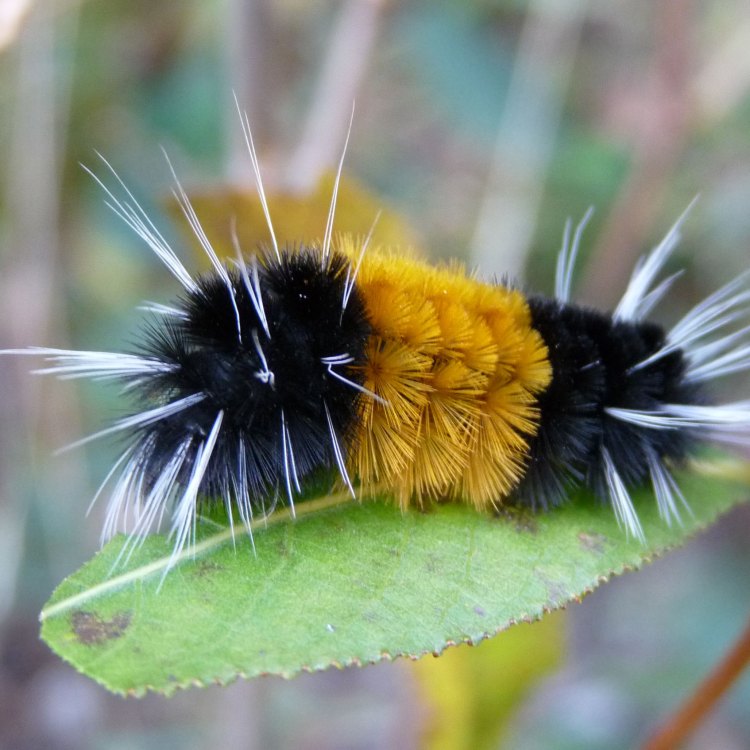
Woolly Bear Caterpillar
- Adult Size: 2 to 2.5 inches (5 to 6.3 cm)
- Average Lifespan: 1 to 2 years
- Reproduction: Sexual
- Reproductive Behavior: Mating occurs during the summer or fall
- Sound or Call: Does not produce sounds
- Migration Pattern: Migrates to find a suitable location for pupation
- Social Groups: Solitary
- Behavior: Mostly active during the day
- Threats: Predation, habitat destruction
- Conservation Status: Not evaluated
- Impact on Ecosystem: Plays a role in the food chain as a prey species
- Human Use: Not commonly used by humans
- Distinctive Features: Long, bristly hairs; black and brown bands
- Interesting Facts: The width of the brown band on a Woolly Bear Caterpillar is believed to predict the severity of the upcoming winter.
- Predator: Birds, small mammals
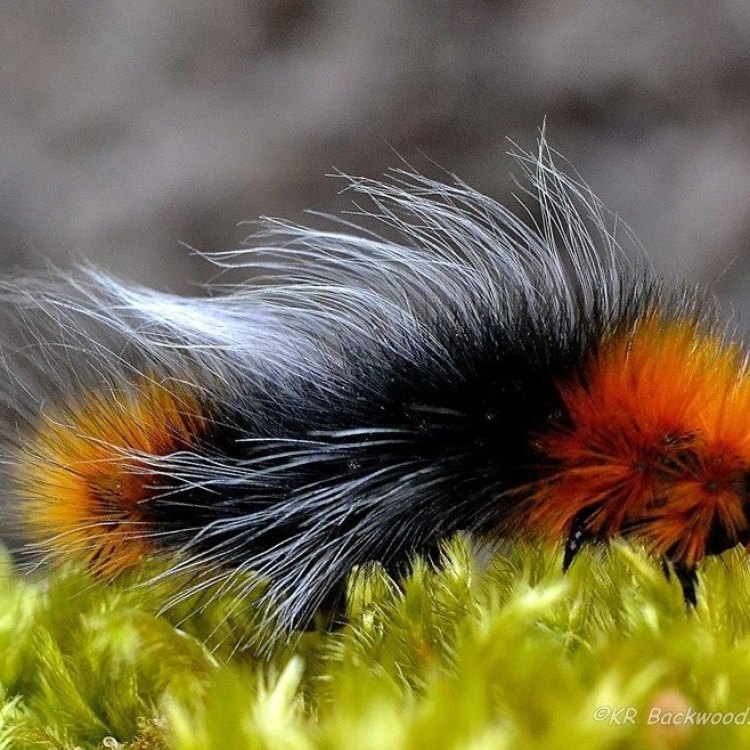
Pyrrharctia isabella
The Fascinating Life of a Woolly Bear Caterpillar
Nature is full of wonders and mysteries, and one of its most unique creatures is the Woolly Bear Caterpillar. With its distinctively long and bristly hairs and striking black and brown bands, it is a sight to behold in the animal kingdom. But what makes this little caterpillar so special and what role does it play in the ecosystem? In this article, we will explore the life of a Woolly Bear Caterpillar and uncover some interesting facts about its behavior, reproductive habits, and impact on the environment.The Woolly Bear Caterpillar, also known as the Woolly Worm or Hedgehog Caterpillar, is the larval stage of the Pyrrharctia isabella moth PeaceOfAnimals.Com. It is native to North America and can be found in various regions, including meadows, forests, and gardens. Its name comes from its thick and woolly appearance, which is due to its long, bristly hairs that cover its body.
Measuring at around 2 to 2.5 inches (5 to 6.3 cm) in length, the Woolly Bear Caterpillar is a relatively small creature. However, what it lacks in size, it makes up for in longevity, with an average lifespan of 1 to 2 years. During this time, it goes through various stages of growth and transformation before eventually turning into a moth.
But before we delve into its fascinating life cycle, let's first take a look at some basic facts about the Woolly Bear Caterpillar.
Reproductive Behavior and Mating Habits
Like most insects, the Woolly Bear Caterpillar reproduces sexually Wood Tick. Mating typically occurs during the summer or fall, with females laying their eggs on plants or trees, such as dandelion, nettle, and clover. The eggs hatch within a few weeks, and the tiny caterpillars begin their journey of growth and transformation.It is worth noting that while Woolly Bear Caterpillars are commonly seen in the fall, they actually live for much longer than that. They hatch from their eggs in the spring and spend the entire summer and fall feeding and growing before entering a state of hibernation called diapause. During this time, they survive freezing temperatures by producing a special kind of antifreeze in their body.
Once spring arrives, the Woolly Bear Caterpillars emerge from their hibernation and continue to feed and grow until they reach their full size. This process can take a few months to a year, depending on the environmental conditions.
Migration and Social Behavior
Unlike some other caterpillars, the Woolly Bear does not live in large groups or colonies. It is a solitary creature that prefers to go about its life alone. However, there is one aspect of its behavior that might be considered social - its migration pattern.As mentioned earlier, Woolly Bear Caterpillars hibernate during the winter, and to do so, they need to find a suitable spot to pupate. This often means traveling long distances to reach a sheltered location, such as under rocks, logs, or leaf litter. Some caterpillars can travel up to 1.3 miles (2 kilometers) away from their original location to find a suitable spot for pupation. This migration behavior helps ensure their survival and increases their chances of successfully transforming into a moth.
Threats and Conservation Status
Like most creatures in the animal kingdom, the Woolly Bear Caterpillar faces various threats in its habitat. The most common threat comes from predators such as birds and small mammals, which will often feed on the caterpillar before it has a chance to transform into a moth.Another threat to the Woolly Bear Caterpillar's survival is habitat destruction. As humans continue to expand and develop land, the natural habitats of these caterpillars are being destroyed, making it harder for them to find suitable locations for pupation.
Currently, the conservation status of the Woolly Bear Caterpillar is not evaluated, but as with most species, its survival is vital to maintaining a healthy ecosystem.
The Woolly Bear's Impact on the Ecosystem
Despite its small size and seemingly insignificant role in the animal kingdom, the Woolly Bear Caterpillar actually plays a crucial role in the ecosystem. As a prey species, it serves as a vital food source for many predators, helping to maintain the balance in the food chain.But that's not all - the Woolly Bear Caterpillar also has an indirect impact on the environment through its feeding habits. As they feed on plants, they also help to control the growth of certain plant species, preventing them from becoming overgrown and potentially damaging the ecosystem.
Distinctive Features and Interesting Facts
One of the most distinctive features of the Woolly Bear Caterpillar is its long, bristly hairs. These hairs serve as a defense mechanism against predators, making it difficult for them to eat or handle the caterpillar. In fact, these hairs can even irritate human skin if touched, so it's best to admire them from a safe distance.But perhaps the most interesting fact about the Woolly Bear Caterpillar is its appearance. Scientists and nature enthusiasts have long believed that the width of the brown band on a Woolly Bear Caterpillar can predict the severity of the upcoming winter. According to folklore, a wider brown band indicates a milder winter, while a thinner band suggests a harsher winter. While no scientific evidence supports this theory, it adds to the mystique and fascination surrounding this little caterpillar.
Human Use
One may wonder if such a unique and intriguing creature has any use for humans. Unfortunately, the Woolly Bear Caterpillar is not commonly used by humans for any specific purpose. However, they do serve as a great source of fascination and observation for nature lovers and scientists alike.The Woolly Bear Caterpillar's Predator
As mentioned earlier, Woolly Bear Caterpillars are preyed upon by various predators, including birds and small mammals. However, one of the main predators of this caterpillar is the parasitoid wasp.Parasitoid wasps lay their eggs on the caterpillar, and when the eggs hatch, the wasp larvae feed on the caterpillar, eventually killing it. This parasitic relationship between the wasp and the Woolly Bear Caterpillar is vital to maintain the balance in the ecosystem.
In Conclusion
The Woolly Bear Caterpillar may seem like a simple creature at first glance, but it has a fascinating life cycle and plays a crucial role in the ecosystem. Its unique appearance, interesting behaviors, and impact on the environment make it a truly remarkable species in the animal kingdom.So, the next time you come across a Woolly Bear Caterpillar, take a moment to appreciate its beauty and importance in nature. It serves as a reminder of the wonders and mysteries of the world we live in, and the importance of preserving the diverse species that call it home.
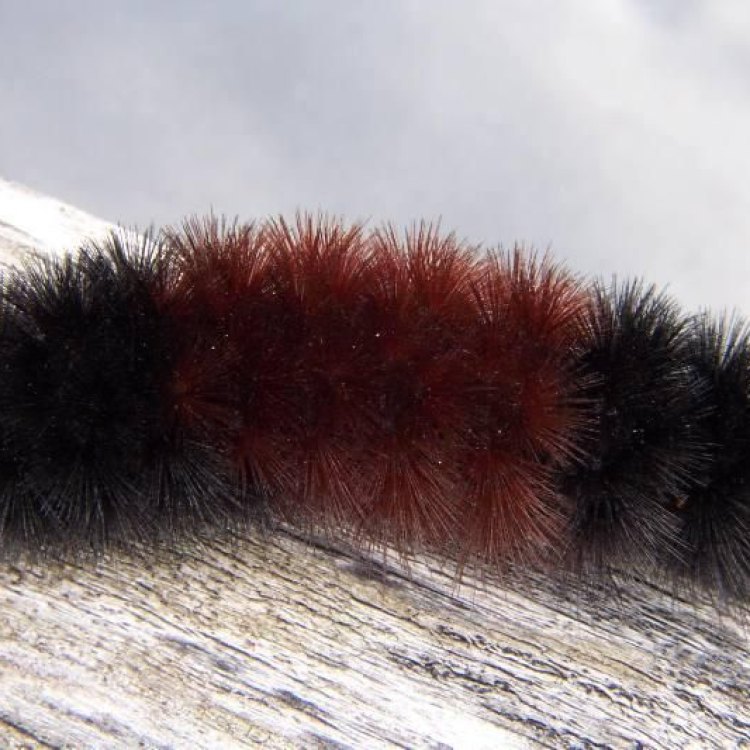
The Fascinating World of the Woolly Bear Caterpillar
Disclaimer: The content provided is for informational purposes only. We cannot guarantee the accuracy of the information on this page 100%. All information provided here may change without prior notice.


